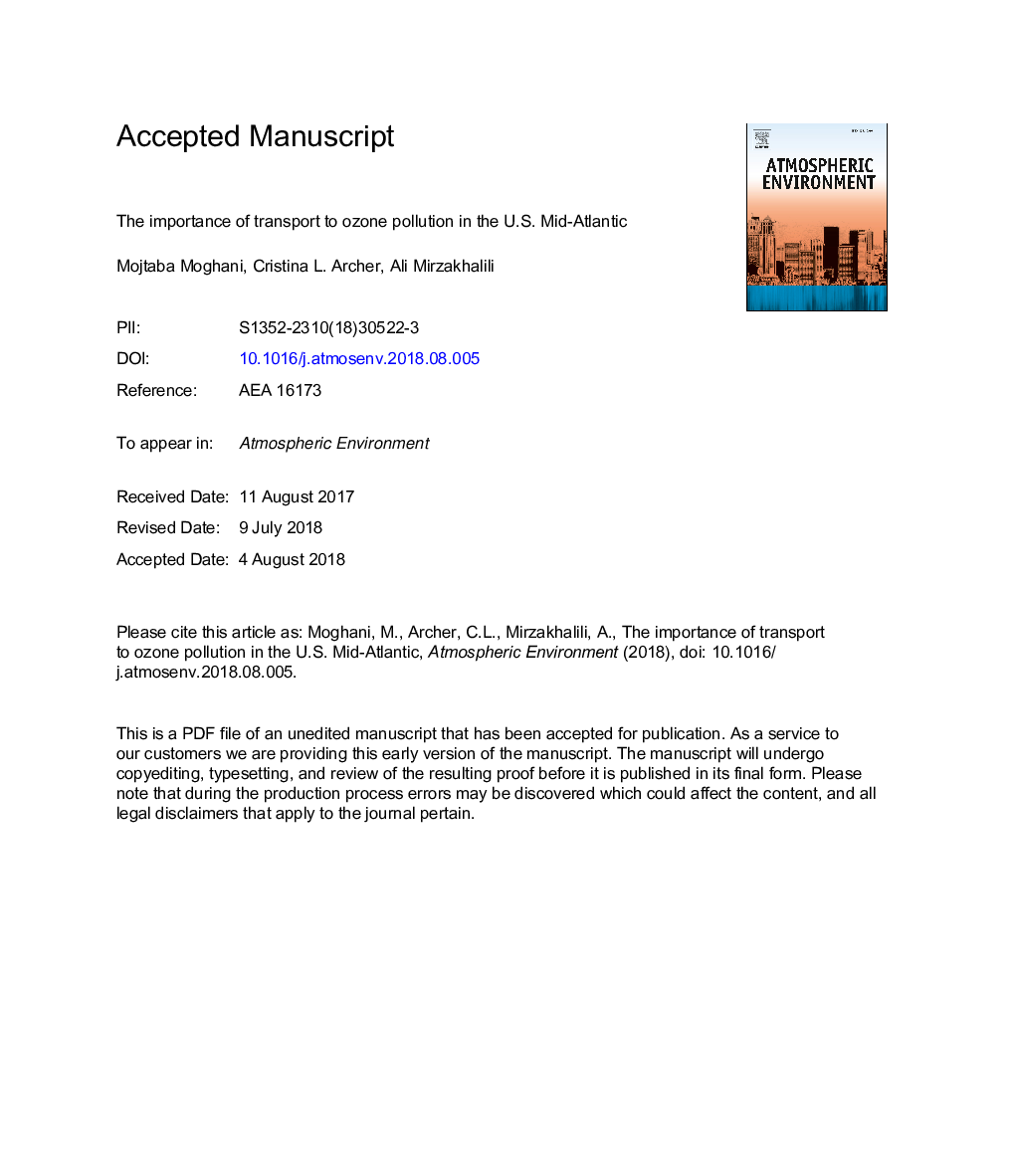| Article ID | Journal | Published Year | Pages | File Type |
|---|---|---|---|---|
| 8863433 | Atmospheric Environment | 2018 | 38 Pages |
Abstract
The U.S. Mid-Atlantic region is affected by transport of ozone and its precursors from upwind states and therefore local emission-reduction strategies are not necessarily the most effective to reach attainment. In this study, we conduct a comprehensive modeling effort with two photochemical models recommended by the U.S. Environmental Protection Agency - the Community Multiscale Air Quality Model (CMAQ) and the Comprehensive Air Quality Model with Extensions (CAMx) - inclusive of source apportionment and localized emission reductions, to study the extent of ozone precursor transport in the Mid-Atlantic and the efficacy of emission-reduction strategies, with a focus on Delaware. Delaware is a small state in the Mid-Atlantic region that is in nonattainment of the 2015 national 8-h ozone standard (0.070â¯ppm) despite its relatively low local emissions, thus it is an ideal test case to study transport. We found that in Delaware: 1) reducing local emissions of NOx and VOC by 20% is minimally effective; 2) the same emission reduction in each of five upwind states individually lowers ozone but not sufficiently to reach attainment; 3) only a consorted effort by the five upwind states together can lower Delaware ozone significantly; and 4) the emission reduction needed by the five states together is approximately 10%, half that of each individual state. This suggests that coordinated efforts and long-term, multi-state strategies are necessary to protect air quality in the Mid-Atlantic.
Related Topics
Physical Sciences and Engineering
Earth and Planetary Sciences
Atmospheric Science
Authors
Mojtaba Moghani, Cristina L. Archer, Ali Mirzakhalili,
